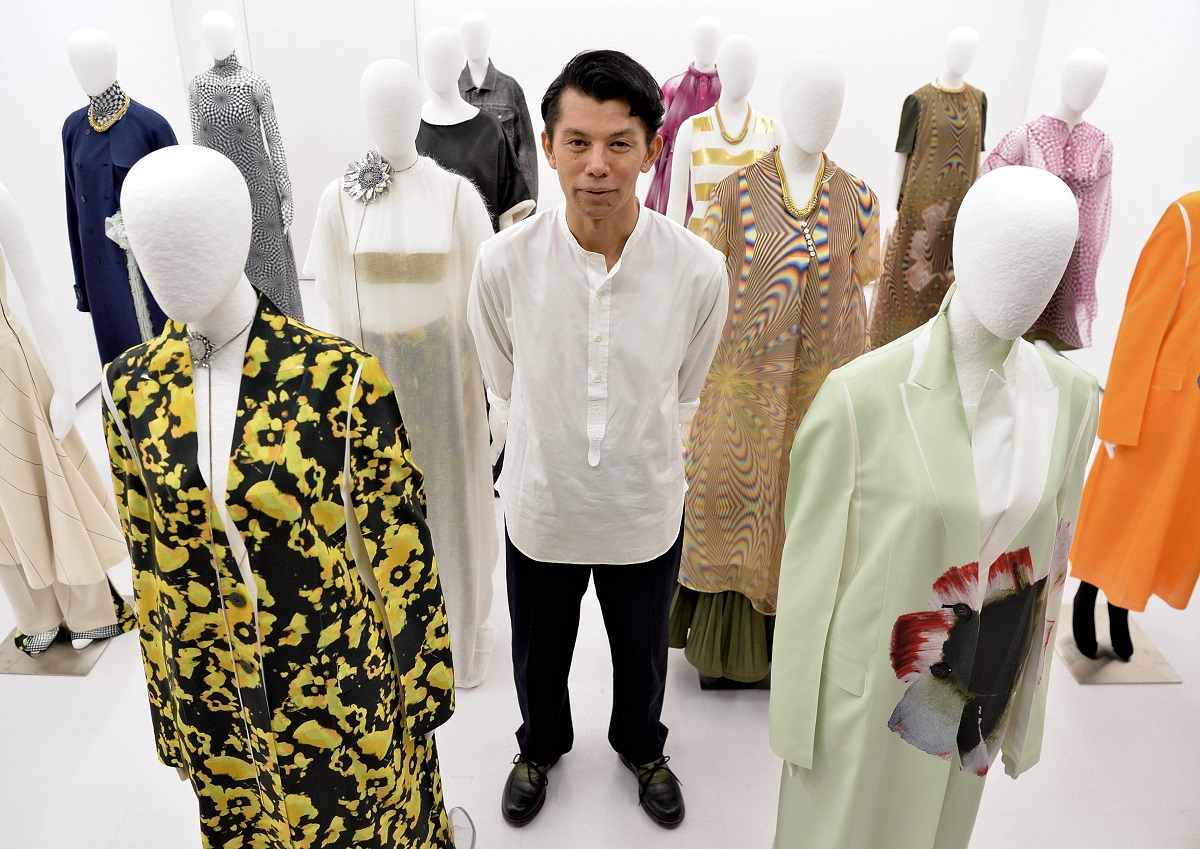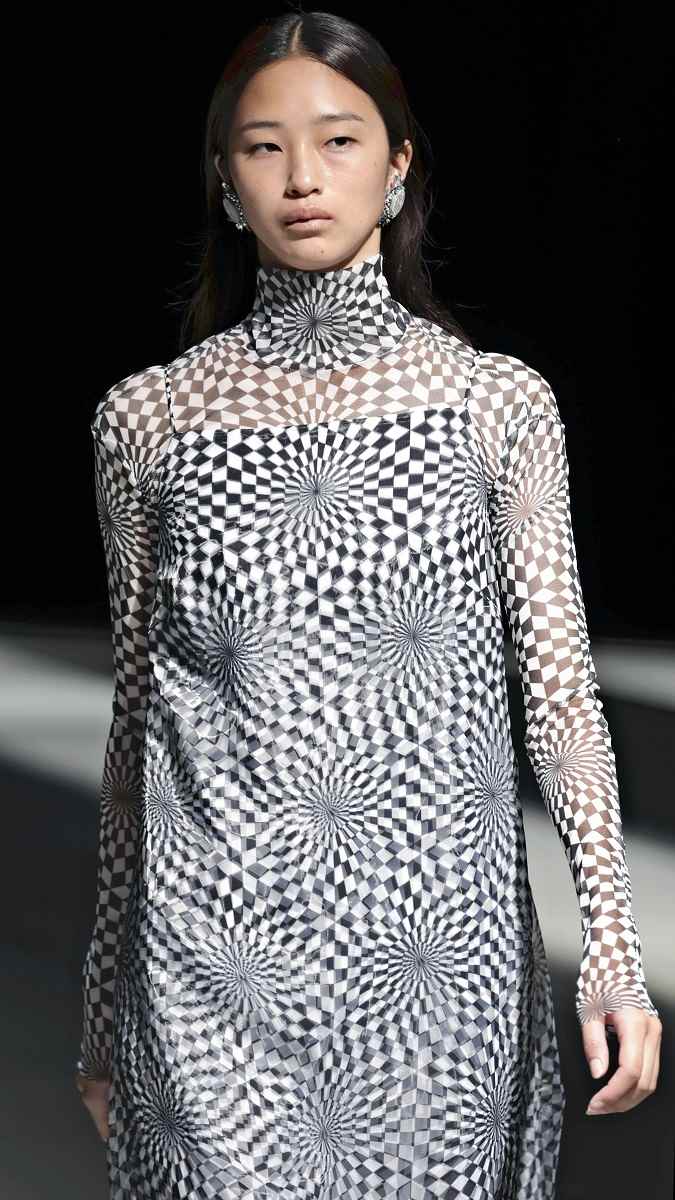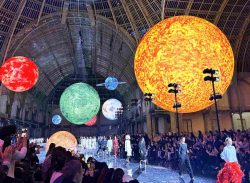Telma Founder Terumasa Nakajima Expresses Warmth Through Handwork; Enjoys Using Japanese Techniques to Create Garments

Telma founder Terumasa Nakajima
12:15 JST, November 15, 2024
This September, Tokyo Fashion Week spring/summer 2025 opened with the debut of the latest styles from Japanese brand Telma. Terumasa Nakajima founded the brand in 2022.
Nakajima is an experienced designer who has worked for high-end brands such as Dries Van Noten in Belgium for more than 10 years.
At Telma’s first runway show, Nakajima showcased elegant garments mostly made with fabric he created using various companies’ advanced Japanese craftsmanship techniques.

A white cape coat made of Japanese washi paper is seen at Tokyo Fashion Week on Sept. 2.
A model wearing a full-length white cape coat kicked off the runway show. The coat is made from 100% lightweight Japanese washi paper, according to the designer.
The highly absorbent washi was made in Bishu, a region stretching from the Owari area in Aichi Prefecture to the Seino area in Gifu Prefecture. Bishu is one of the nation’s leading areas of textile production.
A golden dress gracefully peeked out from the coat’s slit as the model walked down the runway.
The show also featured a dress made with two layers of sheer fabric that created a pattern like an optical illusion, as well as a top made from cotton jersey treated to resemble sheepskin leather.

A dress made of two sheer layers of fabric

A top made from cotton jersey treated to resemble sheepskin leather
“I want to make clothes that are personal and have the warmth of handwork,” Nakajima said. The runway was filled with clothes that appeared to be a direct expression of those words.
Nakajima graduated from the renowned Royal Academy of Fine Arts Antwerp in Belgium in 2010 and joined Dries Van Noten based in the city as an assistant to the designer. He oversaw the design of women’s clothes.
Van Noten, the founder of Dries Van Noten, always sought “neutrality,” according to Nakajima. Van Noten was “devoted to designing and styling clothes that harmonize with the people who wear them,” believing that “it is wrong to force flashy designs and also not make a statement,” Nakajima said.
It seemed like Western clothes were made by cutting up fabric to create three-dimensional pieces like armor, Nakajima said. The turning point came when he saw the clothes of world-famous designer Issey Miyake.

The finale of Telma’s runway show
Nakajima was amazed by the “techniques that create beautiful silhouettes by pleating a single piece of fabric,” and joined the Japanese brand in 2014. He was involved in the clothes-making process, collaborating with local companies with advanced expertise in weaving, dyeing and other skills.
Since launching Telma, 60% to 70% of Nakajima’s designs have been made from fabrics he devised himself. “Only in Japan can fabrics for a single fashion style be made in a consistent manner, ranging from synthetic to natural fibers,” said Nakajima, who continues to devote himself to pursuing new materials.
Nakajima believes that although clothes made using Japanese techniques are not suited to mass production, they are able to show their presence in the world. He aims to create a “global niche brand,” armed with the garments.
“I want to make clothes that capture people’s emotions and make them instinctively feel they are wonderful, rather than logically made clothes,” said Nakajima who is set to continue conveying the joy of dressing up.
"Culture" POPULAR ARTICLE
-

Van Cleef & Arpels Dazzles with Art Deco Artisanry at Tokyo Exhibit
-

Disney’s ‘Twisted-Wonderland’ Animated Series Puts Villains in Spotlight: New Show Features School Inspired by Classic Disney Films
-

Japan Plans to Distribute Manga Overseas Via New Platform
-

Japanese Craftsman Produces Beautiful and Durable Bags Made of Wood
-

Ayumi Hamasaki’s Shanghai Concert Canceled Day Before Schedule as Part of Beijing Backlash
JN ACCESS RANKING
-

Keidanren Chairman Yoshinobu Tsutsui Visits Kashiwazaki-Kariwa Nuclear Power Plant; Inspects New Emergency Safety System
-

Imports of Rare Earths from China Facing Delays, May Be Caused by Deterioration of Japan-China Relations
-

University of Tokyo Professor Discusses Japanese Economic Security in Interview Ahead of Forum
-

Japan Pulls out of Vietnam Nuclear Project, Complicating Hanoi’s Power Plans
-

Govt Aims to Expand NISA Program Lineup, Abolish Age Restriction
























